Open Wordfast Pro 3 and click
![]() .
.
The PM perspective appears
Click Analyze.
The Analyze window appears.
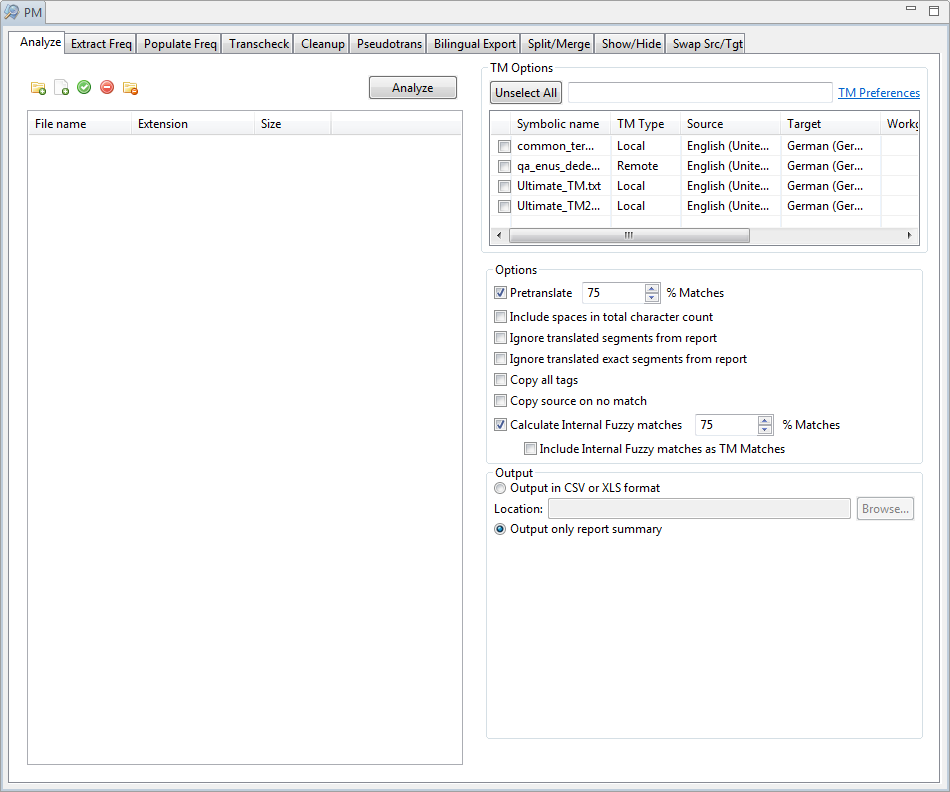 Note: The TM counter shows the number
of selected TMs and the available TMs.
Note: The TM counter shows the number
of selected TMs and the available TMs.

Click
![]() to browse and select files from
a folder. To add multiple files, press the Ctrl
key and select the files.
to browse and select files from
a folder. To add multiple files, press the Ctrl
key and select the files.
OR
Click ![]() to add an entire folder. Once a folder
is selected, the following message appears.
to add an entire folder. Once a folder
is selected, the following message appears.

Click
Yes to add files recursively.
This ensures that all files within a folder, including the files
in the sub folders are added.
The files appear. Files are selected by default when added.
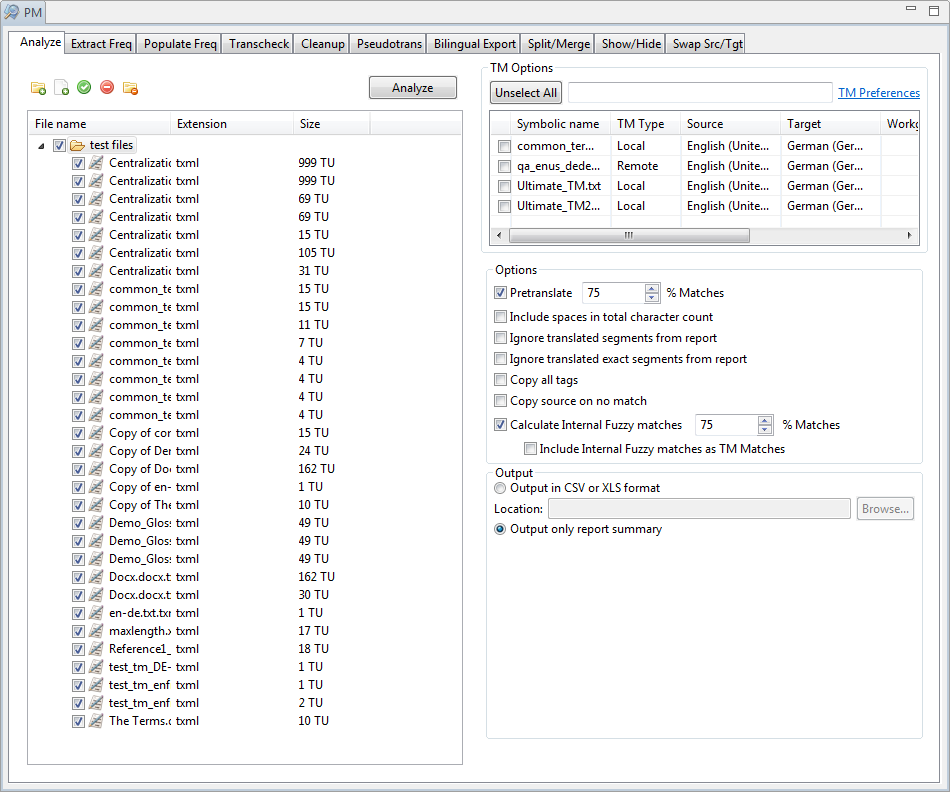
If the added folders contain
files of multiple formats, the Choose Format Dialog box appears. Choose
the format for the files to be analyzed. Only one format can be selected
at a time.
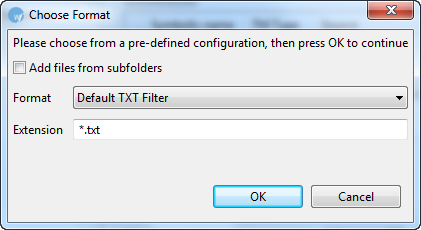
Note: You can analyze up to 20 files at a time using Wordfast
Pro 3 in Demo mode. If you want to analyze more files you will need
to purchase the Wordfast Pro 3 license from www.wordfast.com.
Select one or more translation
memories for analyzing the files.
Note: You will need to add at least one translation memory (TM)
before analyzing files. To add a local or remote TM, click TM
Preferences. Go to Creating
or opening a TM for more information. You can click in the TM
Options column header to sort the TMs in ascending or descending order.
You can unselect all chosen TMs by clicking Unselect
All.
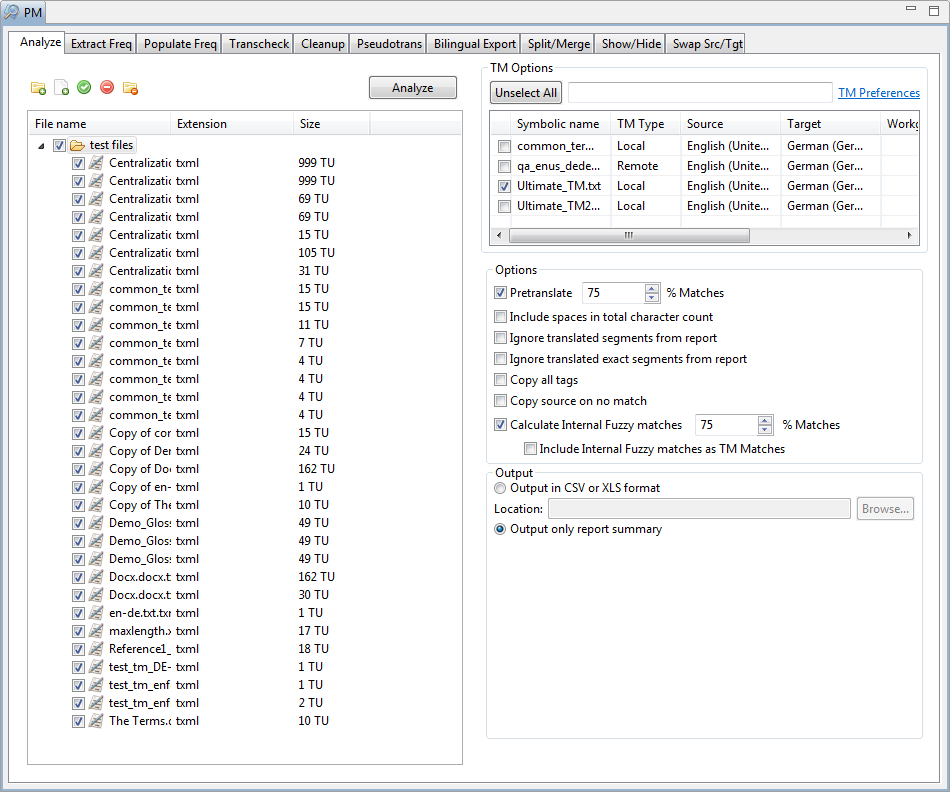
Select the following options if required:
Select |
to... |
Pretranslate |
pretranslate the translatable segments and enter the percentage of TM matches. Note: This is an
optional step. The percentage defines the minimum leverage
required to pre-translate a specific segment. |
Include spaces in total character count |
include spaces in source character count. |
Ignore translated segments from report |
exclude already-translated segments from the analysis report. |
Ignore translated exact segments from report |
exclude already-translated exact segments from the analysis report. |
Copy all tags |
from the source to the target segments for blank segments. |
Copy Source on no match |
copy source segments to target only for no match segments. |
Calculate Internal Fuzzy Matches |
calculate internal fuzzy matches in source files. For example, if there is a partial repetition of segments in a source file, it will be calculated as an internal fuzzy match. Select the percentage that should be calculated for such segments. |
Include Internal Fuzzy matches as TM Matches |
include internal repetitions as a TM match. |
Select format
for the output report. You have two options:
Output in CSV or XLS format: Select this option and click Browse
to select a location and provide a file name as shown in the example
below.
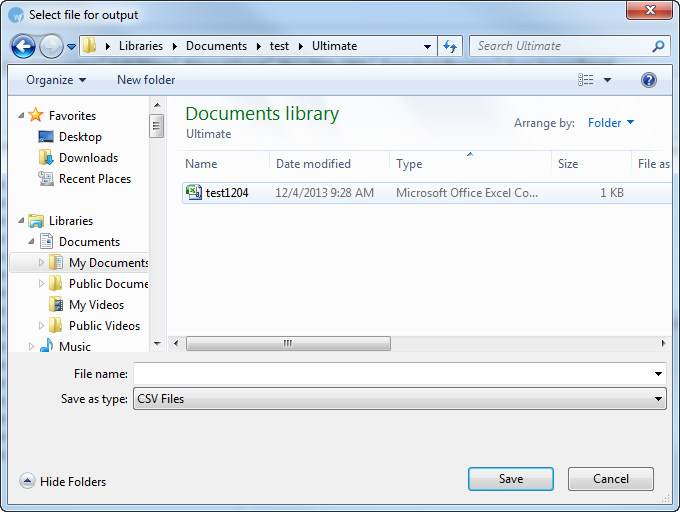
Click Save,
to save the CSV file. The Analyze window appears with the location
of the CSV file as shown in the example below.

Output only report summary: Select this option to view the output report
on-screen
Click Analyze.
Note: When Excel files with sheetnames exceeding 31 characters
are analyzed a warning message will appear. The warning message will
prompt you to shorten the sheetnames that exceed 31 characters.
The analyzed TXML files are saved in the same folder as the source
files. According to the output report format, either a CSV file is
saved at the chosen location or the Analysis and Translation report
appears as shown below. The report for files analyzed against separate
TMs appears in separate tabs.
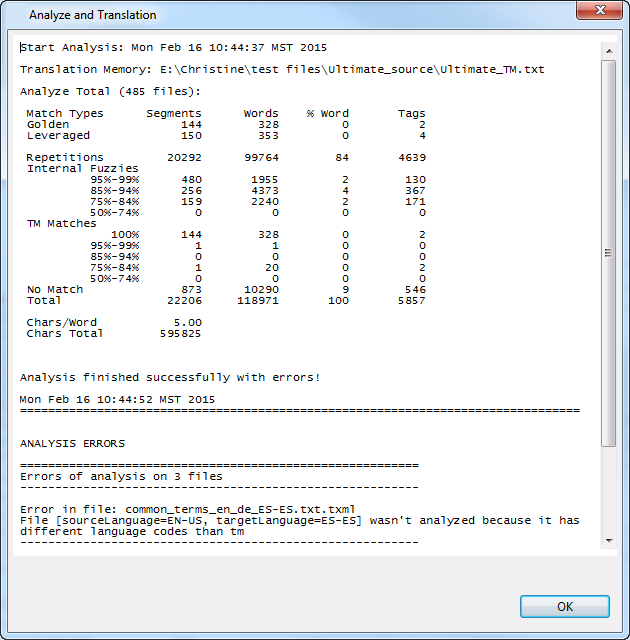
The TM analysis report will display either % Segments or % Words based
on the option selected in step 9 of Selecting
translation memory settings.